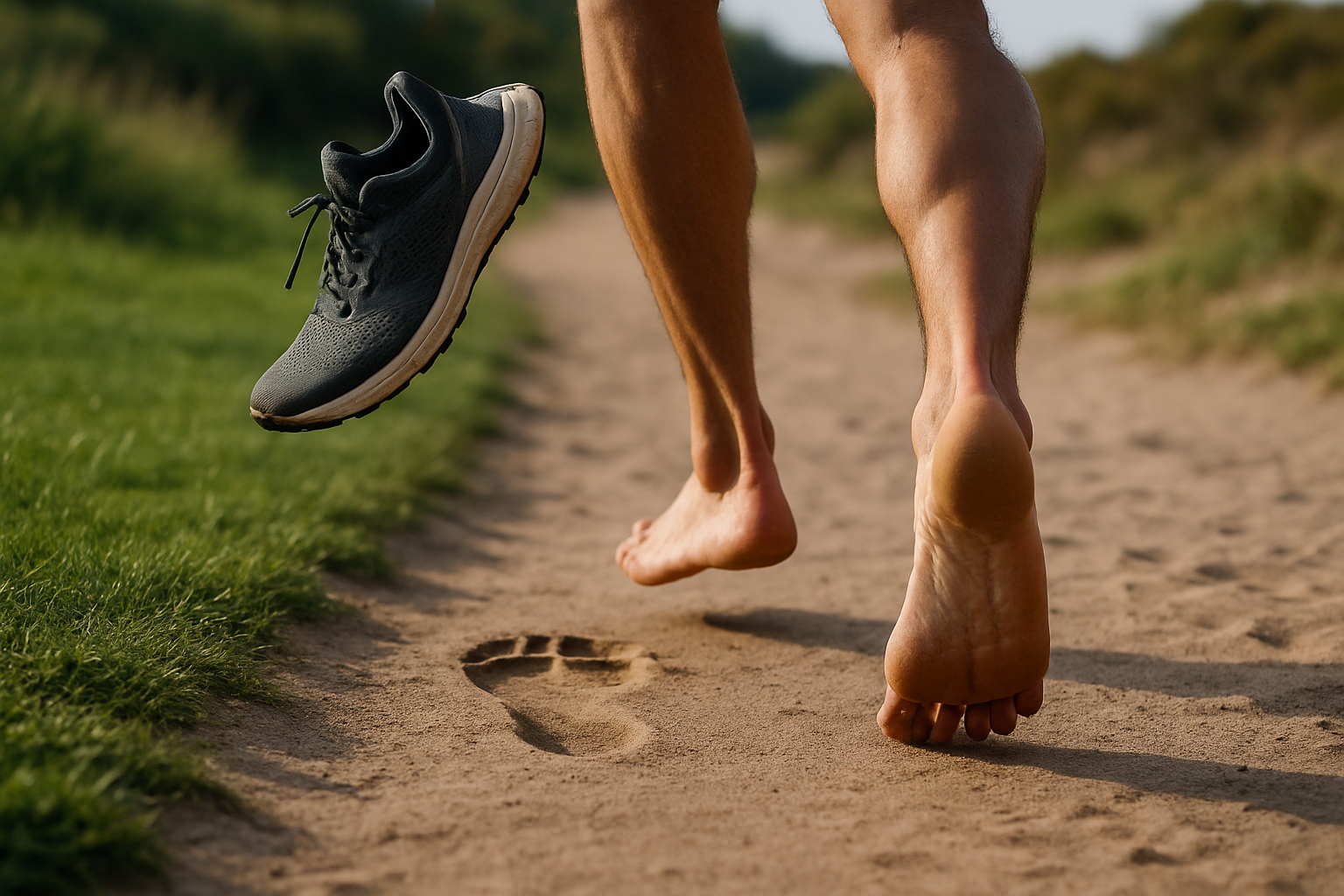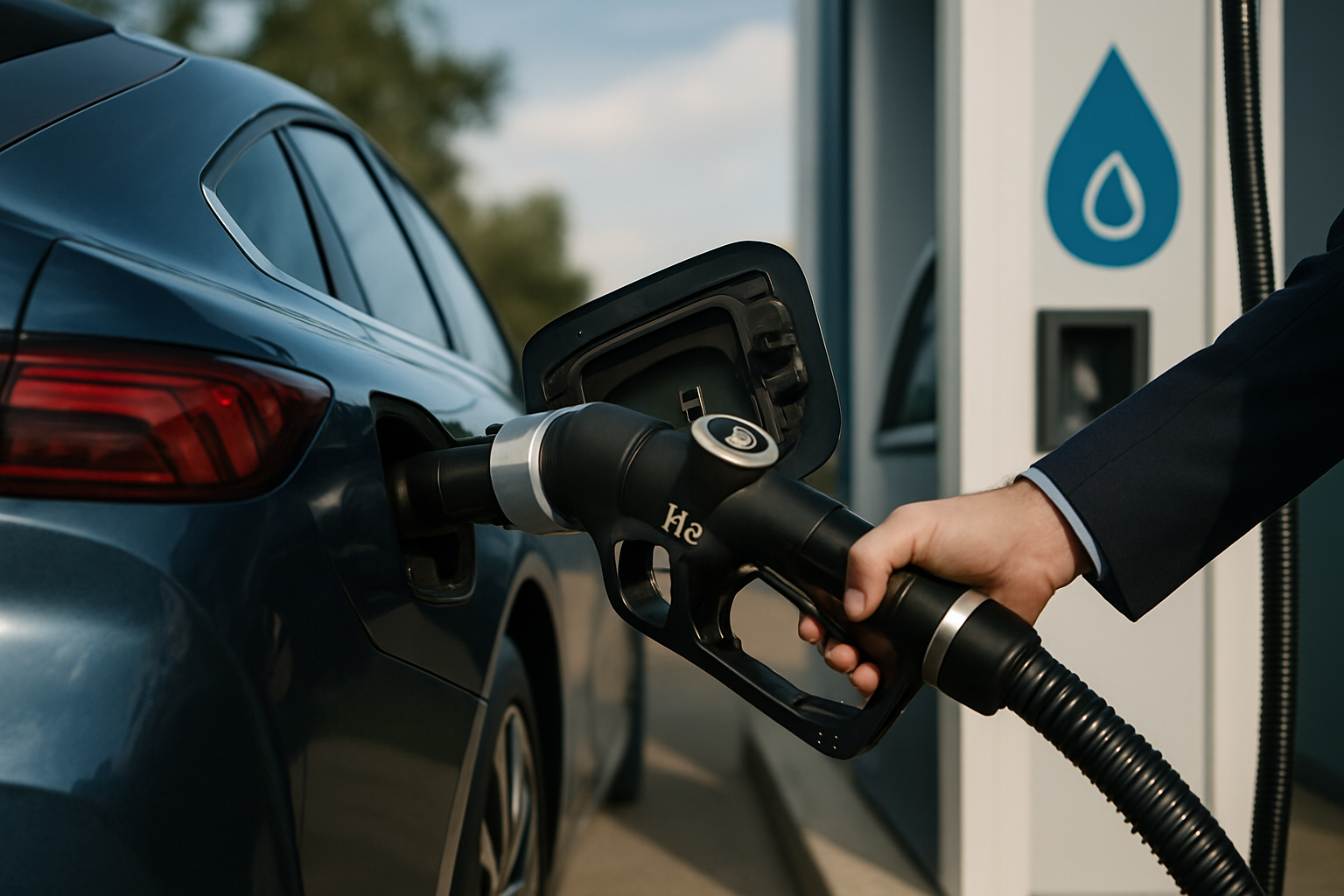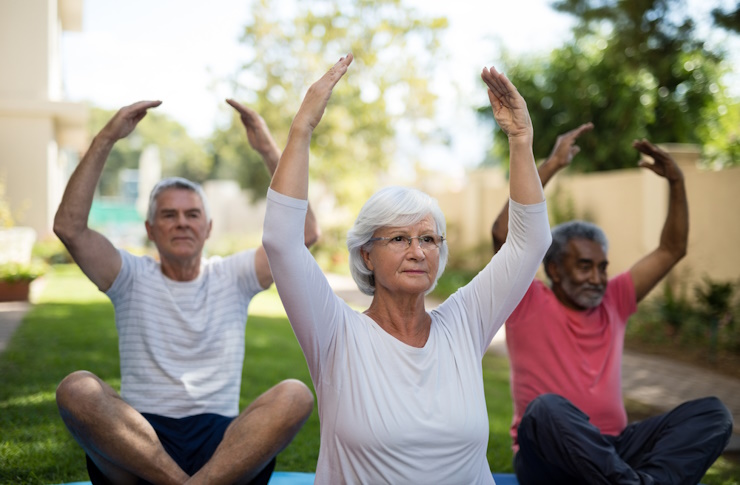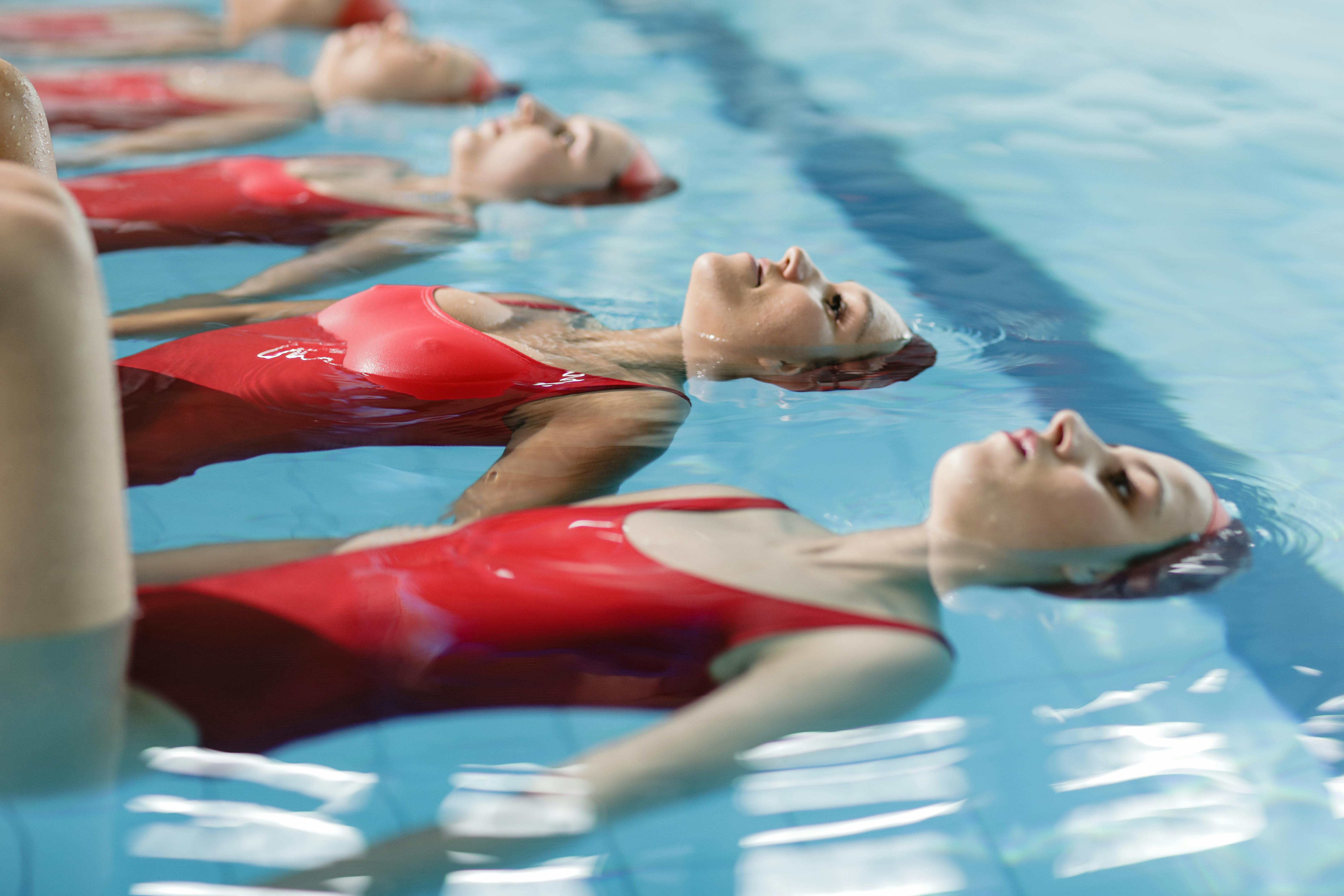Barefoot Running: Rediscovering the Natural Stride
The rhythmic pounding of feet on pavement echoes through city parks and rural trails as runners embrace a primal approach to their sport. Barefoot running, once considered a fringe practice, has gained traction among athletes seeking to reconnect with their natural gait and potentially reduce injury risk. This movement challenges conventional wisdom about running shoes and biomechanics, sparking debates in the running community and scientific circles alike.

The modern barefoot running movement, however, gained significant momentum in the early 2000s. Christopher McDougall’s bestselling book “Born to Run” introduced many to the concept, highlighting the Tarahumara’s running prowess and questioning the necessity of high-tech running shoes. This sparked a wave of interest in minimalist footwear and barefoot techniques, leading to a surge in research and debate within the running community.
Proponents argue that running barefoot or in minimalist shoes allows for a more natural foot strike, typically landing on the forefoot or midfoot rather than the heel. This, they claim, can lead to improved running efficiency and reduced impact forces on joints. The theory suggests that modern cushioned shoes have altered our natural running form, potentially contributing to injuries.
The Science Behind Barefoot Biomechanics
Research into barefoot running has yielded intriguing insights into human biomechanics. Studies have shown that barefoot runners tend to adopt a different foot strike pattern compared to those in conventional shoes. A 2010 study published in Nature found that habitually barefoot endurance runners often land on the fore-foot or mid-foot, generating smaller collision forces than rear-foot striking runners in shoes.
This altered foot strike pattern can lead to changes throughout the kinetic chain. Barefoot runners typically exhibit shorter stride lengths, higher cadence, and increased knee flexion at foot strike. These adaptations are thought to distribute impact forces more evenly and potentially reduce stress on joints.
However, the scientific community remains divided on the overall benefits and risks of barefoot running. While some studies suggest potential advantages in terms of running economy and reduced injury rates, others have found no significant differences or even increased risks for certain types of injuries.
Transitioning to Barefoot Running: A Gradual Approach
For those intrigued by the concept of barefoot running, experts universally recommend a gradual transition. The muscles, tendons, and ligaments of the feet and lower legs need time to adapt to the new stresses of running without cushioned support.
A typical transition plan might begin with short walks or jogs on soft surfaces like grass or sand. This allows the feet to start building strength and proprioception. Gradually increasing distance and incorporating harder surfaces over weeks or months gives the body time to adapt and develop the necessary calluses.
Many runners find that minimalist shoes serve as a useful intermediate step. These shoes provide minimal cushioning and support while offering protection from sharp objects and extreme temperatures. Popular options include “five-finger” shoes that separate the toes, as well as thin-soled sandals or slippers designed for running.
It’s crucial to listen to your body during this transition. Soreness in the calves, Achilles tendon, and feet is common as these areas adapt to new stresses. However, sharp pain or persistent discomfort should be taken as a sign to slow down the transition process.
Benefits and Risks: Weighing the Evidence
Proponents of barefoot running cite numerous potential benefits. These include improved proprioception (awareness of body position), strengthened foot and ankle muscles, and enhanced running economy. Some runners report reduced knee and hip pain after transitioning to barefoot or minimalist running.
A 2014 study published in the British Journal of Sports Medicine found that barefoot running was associated with reduced loading rates and impact forces compared to shod running. This could potentially translate to a lower risk of certain overuse injuries, particularly those related to repetitive impact.
However, the picture is not uniformly positive. Critics argue that barefoot running may increase the risk of certain acute injuries, particularly to the feet. Without the protection of shoes, runners are more vulnerable to cuts, bruises, and puncture wounds from debris on running surfaces.
There’s also concern about increased stress on the Achilles tendon and calf muscles, especially during the transition period. Some studies have noted an increased risk of bone marrow edema in the feet of runners transitioning to minimalist shoes, suggesting a potential for stress fractures if the transition is not managed carefully.
Barefoot Running in Different Environments
The practicality and benefits of barefoot running can vary significantly depending on the environment. Natural surfaces like grass, sand, and forest trails offer ideal conditions for barefoot runners. These softer, more varied terrains provide sensory feedback to the feet and can help strengthen the intrinsic foot muscles.
Urban environments present more challenges. Concrete and asphalt are unforgiving surfaces that can be punishing on bare feet, especially for those new to the practice. Additionally, the risk of encountering glass, nails, or other hazardous debris is much higher in city settings.
Climate also plays a crucial role. While barefoot running might be comfortable year-round in temperate climates, extreme heat or cold can make it impractical or even dangerous in other regions. Many barefoot enthusiasts use minimalist footwear in these conditions to protect their feet while still maintaining much of the barefoot experience.
Barefoot Running and Performance
The impact of barefoot running on athletic performance remains a topic of debate. Some elite runners have embraced minimalist or barefoot techniques, claiming improvements in their form and race times. Notably, Abebe Bikila of Ethiopia won the 1960 Olympic marathon running barefoot, setting a world record in the process.
Research on performance benefits has yielded mixed results. Some studies suggest that barefoot running may lead to improved running economy, potentially translating to better endurance performance. A 2012 study published in the International Journal of Sports Medicine found that runners consumed less oxygen at a given pace when running barefoot compared to running in shoes.
However, other research has found no significant performance differences between barefoot and shod running. The individual variability in response to barefoot running makes it difficult to draw broad conclusions about its impact on performance.
The Footwear Industry’s Response
The rise of the barefoot running movement has not gone unnoticed by the footwear industry. Many major shoe manufacturers have introduced lines of minimalist shoes designed to mimic the barefoot experience while offering some protection. These shoes typically feature thin, flexible soles with minimal cushioning and no arch support.
This trend has led to a broader reimagining of running shoe design. Even conventional running shoes have been influenced by barefoot principles, with many models now featuring lower heel-to-toe drops and more flexible soles. This shift represents a significant change from the highly cushioned, motion-control shoes that dominated the market for decades.
However, the industry has also faced challenges related to barefoot-inspired products. In 2012, Vibram, maker of the popular FiveFingers minimalist shoes, faced a class-action lawsuit alleging that the company made unsubstantiated claims about the health benefits of its products. The case was settled out of court, highlighting the ongoing debate and uncertainty surrounding the benefits of barefoot-style running.
Barefoot Running in Different Populations
The suitability and benefits of barefoot running may vary across different populations. For children, some podiatrists argue that barefoot activities can be beneficial for foot development, allowing natural arch formation and muscle strength. However, they also caution that children should be protected from hazardous surfaces and extreme temperatures.
For older adults or those with existing foot conditions, the transition to barefoot running may be more challenging or inadvisable. Conditions such as diabetes, which can affect foot sensation, or structural issues like severe flat feet may make barefoot running risky.
Elite athletes have shown varied approaches to barefoot running. While some have fully embraced the practice, others incorporate elements of barefoot training into their regimens without abandoning conventional running shoes for competition. This might involve barefoot drills for technique work or occasional barefoot runs for foot strengthening.
The Future of Barefoot Running
As research continues and more long-term data becomes available, our understanding of barefoot running’s impacts is likely to evolve. Current trends suggest a move towards a more nuanced view, recognizing that barefoot running may offer benefits for some individuals while not being suitable for others.
Future developments may include more sophisticated minimalist shoes that better replicate the barefoot experience while offering protection. There’s also growing interest in “natural movement” practices that extend beyond running, incorporating barefoot principles into other aspects of physical activity and daily life.
The barefoot running debate has already influenced broader discussions about human movement and shoe design. As we continue to explore the complexities of human biomechanics, the insights gained from barefoot running research may contribute to advancements in injury prevention, performance optimization, and overall foot health.
Conclusion: Finding Your Footing
Barefoot running represents a fascinating intersection of evolutionary biology, biomechanics, and modern athletic practice. While it’s clear that humans evolved to run without shoes, the complexities of modern life and varied individual needs make a one-size-fits-all approach unrealistic.
For those interested in exploring barefoot running, a cautious and gradual approach is essential. Starting with short distances on forgiving surfaces, listening to your body, and being willing to adjust or abandon the practice if it doesn’t feel right are key principles. Consulting with a running coach or healthcare professional familiar with barefoot techniques can provide valuable guidance.
Ultimately, the decision to run barefoot or in shoes is a personal one, influenced by individual biomechanics, running goals, and environmental factors. The barefoot running movement has undoubtedly challenged our assumptions about proper running form and footwear design. Whether one chooses to embrace fully barefoot running or simply incorporate some of its principles, the renewed focus on natural movement patterns and foot strength can be a positive development for runners of all levels.
As research continues and more long-term data becomes available, our understanding of the benefits and risks of barefoot running will undoubtedly evolve. What remains clear is that this primal approach to running has sparked a valuable conversation about human movement, challenging us to reconsider our relationship with our feet and the ground beneath them.





